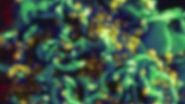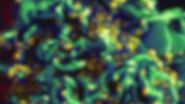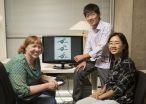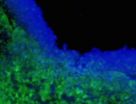(Press-News.org) VIDEO:
The Jones lab details a new target to fighting HIV.
Click here for more information.
LA JOLLA—Like a slumbering dragon, HIV can lay dormant in a person's cells for years, evading medical treatments only to wake up and strike at a later time, quickly replicating itself and destroying the immune system.
Scientists at the Salk Institute have uncovered a new protein that participates in active HIV replication, as detailed in the latest issue of Genes & Development. The new protein, called Ssu72, is part of a switch used to awaken HIV-1 (the most common type of HIV) from its slumber.
More than 35 million people worldwide are living with HIV and about a million people die a year due to the disease, according to the World Health Organization. There is no cure, and while regular medication makes the disease manageable, treatment can have severe side effects, is not readily available to everyone and requires a regiment that can be challenging for patients to adhere to.
The team began by identifying a list of 50 or so proteins that interact with a well-known protein HIV creates called Tat.
"The virus cannot live without Tat," says Katherine Jones, Salk professor in the Regulatory Biology Laboratory and senior author of the study.
Tat acts as a lookout in the cell for the virus, telling the virus when the cellular environment is favorable for its replication. When the environment is right, Tat kicks off the virus' transcription, the process by which HIV reads and replicates its building blocks (RNA) to spread throughout the body.
One of the proteins on the list that caught Jones' eye was Ssu72 (a phosphatase). This enzyme had been shown in yeast to affect the transcription machinery. Sure enough, her team found that Ssu72 binds directly to Tat and not only begins the transcription process, but also creates a feedback loop to ramp up the process.
"Tat is like an engine for HIV replication and Ssu72 revs up the engine," says Lirong Zhang, one of the first authors and a Salk researcher. "If we target this interaction between Ssu72 and Tat, we may be able to stop the replication of HIV."
The findings were surprising to the team because Tat, a relatively small protein, was previously thought to have a simpler role. Jones' lab previously discovered the CycT1 protein, another critical protein that Tat uses to begin the steps of replicating the virus. "After all these years, we thought that Tat only had this one partner (CycT1), but when we looked at it a bit harder, we found that it also binds and stimulates the Ssu72 phosphatase, which controls an immediately preceding step to switch on HIV," she said.
CycT1 is needed for normal cell function, so it may not be an ideal anti-viral target. However, the team found that Ssu72 is not required for making RNA for most host cell genes in the way it is used by HIV, making it a potentially promising target for drug therapy.
"Many proteins that Tat interacts with are essential for normal cellular transcription so those can't be targeted unless you want to kill normal cells," says co-first author Yupeng Chen, a Salk researcher. "Ssu72 seems to be different—at least in the way it is used by HIV."
Now that the team knows the protein is specifically required for HIV transcription, they next plan to investigate how they can target the protein, for example by inhibiting Ssu72's ability kick off the transcription process. They are also examining whether latent HIV infections result from low levels of Ssu72 in resting T cells. And stay tuned: the lab is excited about checking other new host cell partners of Tat that were identified in this study.
INFORMATION:
Authors of the work include Katherine A. Jones, Yupeng Chen, Lirong Zhang, Conchi Estar, Seung H. Choi, Luis Moreno Jr. of the Salk Institute; John R. Yates III and James J. Moresco of The Scripps Research Institute; and Jonathan Karn of Case Western Reserve University School of Medicine.
Funding for the work was provided by the National Institutes of Health, the National
Center for Research Resources, the Blasker-Rose-Miah Fund and the Margaret T. Morris Foundation.
About the Salk Institute for Biological Studies
The Salk Institute for Biological Studies is one of the world's preeminent basic research institutions, where internationally renowned faculty probes fundamental life science questions in a unique, collaborative, and creative environment. Focused both on discovery and on mentoring future generations of researchers, Salk scientists make groundbreaking contributions to our understanding of cancer, aging, Alzheimer's, diabetes and infectious diseases by studying neuroscience, genetics, cell and plant biology, and related disciplines.
Faculty achievements have been recognized with numerous honors, including Nobel Prizes and memberships in the National Academy of Sciences. Founded in 1960 by polio vaccine pioneer Jonas Salk, MD, the Institute is an independent nonprofit organization and architectural landmark.
Spectacular eruptions at Bárðarbunga volcano in central Iceland have been spewing lava continuously since Aug. 31. Massive amounts of erupting lava are connected to the destruction of supercontinents and dramatic changes in climate and ecosystems.
New research from UC Davis and Aarhus University in Denmark shows that high mantle temperatures miles beneath the Earth's surface are essential for generating such large amounts of magma. In fact, the scientists found that the Bárðarbunga volcano lies directly above the hottest portion of the North Atlantic ...
Harvard Stem Cell Institute scientists at Massachusetts General Hospital have devised a new way to use stem cells in the fight against brain cancer. A team led by neuroscientist Khalid Shah, MS, PhD, who recently demonstrated the value of stem cells loaded with cancer-killing herpes viruses, now has a way to genetically engineer stem cells so that they can produce and secrete tumor-killing toxins.
In the AlphaMed Press journal STEM CELLS, Shah's team shows how the toxin-secreting stem cells can be used to eradicate cancer cells remaining in mouse brains after their main ...
A new study has found that implementing stricter fisheries management overcame the expected detrimental effects of climate change disturbances in coral reef fisheries badly impacted by the 1997/98 El Niño, according to the Wildlife Conservation Society.
The 17-year study led by WCS fisheries scientists found that rapid implementation of fisheries restrictions countered adverse climate effects and actually increased fisheries catches, counter to predictions and findings in other studies without stricter management. This is good news for the millions of people who ...
Physics researchers at Virginia Commonwealth University have discovered that most of the electrolytes used in lithium-ion batteries — commonly found in consumer electronic devices — are superhalogens, and that the vast majority of these electrolytes contain toxic halogens.
At the same time, the researchers also found that the electrolytes in lithium-ion batteries (also known as Li-ion batteries) could be replaced with halogen-free electrolytes that are both nontoxic and environmentally friendly.
"The significance [of our findings] is that one can have a ...
Rockville, MD –Disaster Medicine and Public Health Preparedness Journal has released a novel, informative article that speaks to volunteers within the Ebola epidemic. The article, contributed by a consortium of Boston-based hospitals, is entitled Sign Me Up: Rules of the Road for Humanitarian Volunteers during the Ebola Outbreak. The authors paint an honest picture of volunteer circumstances, and ask those considering volunteering to not make the decision lightly. They insist that the "global healthcare community must and will rise to serve."
The World Health Organization ...
NASA's TRMM satellite saw that Tropical Storm Ana was still generating moderate rainfall is it pulled away from Hawaii. The next day, NASA's Aqua satellite saw that wind shear was having an effect on the storm as it moved over open ocean.
On Oct. 24, Ana had moved far enough away from land areas that there were no watches or warnings in effect.
The Tropical Rainfall Measuring Mission (TRMM) satellite flew over tropical storm Ana on October 22, 2014 at 1935 UTC (about 8:30 a.m. HST local time). Ana formed over ten days ago but after moving to the northwest of the Hawaiian ...
BUFFALO, N.Y. -- When partnering with larger companies, startups with a small number of carefully chosen alliances will reap the most benefits, according to new research from the University at Buffalo School of Management.
Forthcoming in Organization Science, the study found that by aligning with established companies, a young firm gains valuable access to additional resources and markets. However, as a startup adds more outside partners, eventually the firm's internal capability will weaken and the cost of maintaining its alliances will exceed any remaining benefits.
"Partnerships ...
NOAA's GOES-East satellite has been keeping an eye on the remnants of Tropical Depression 9.
On Oct. 24 at 14:30 UTC (10:30 a.m. EDT) GOES-East captured a visible image of clouds and thunderstorms associated with former Tropical Depression 9,, centered over the southeastern Yucatan Peninsula of Mexico, Belize, and the adjacent northwestern Caribbean Sea.
NOAA's National Hurricane Center (NHC) noted that surface pressures were rising in the area, and the re-development of the former depression is unlikely. The remnants are expected to continue moving east over the ...
Endurance athletes taking part in triathlons are at risk of the potentially life-threatening condition of swimming-induced pulmonary oedema. Cardiologists from Musgrove Park Hospital, Taunton, writing in the Journal of the Royal Society of Medicine, say the condition, which causes an excess collection of watery fluid in the lungs, is likely to become more common with the increase in participation in endurance sports. Increasing numbers of cases are being reported in community triathletes and army trainees. Episodes are more likely to occur in highly fit individuals undertaking ...
A survey published this year found that over 50% of final year veterinary students in the UK do not feel confident either in discussing orodental problems with clients or in performing a detailed examination of the oral cavity of their small animal patients.1 Once in practice, things don't always improve and, anecdotally, it seems many vets dread feline dental procedures.
UK-based practitioners, Rachel Perry and Elise Robertson, who themselves felt woefully ill-prepared for feline dentistry as new graduates, have joined forces in an initiative to plug this educational ...






